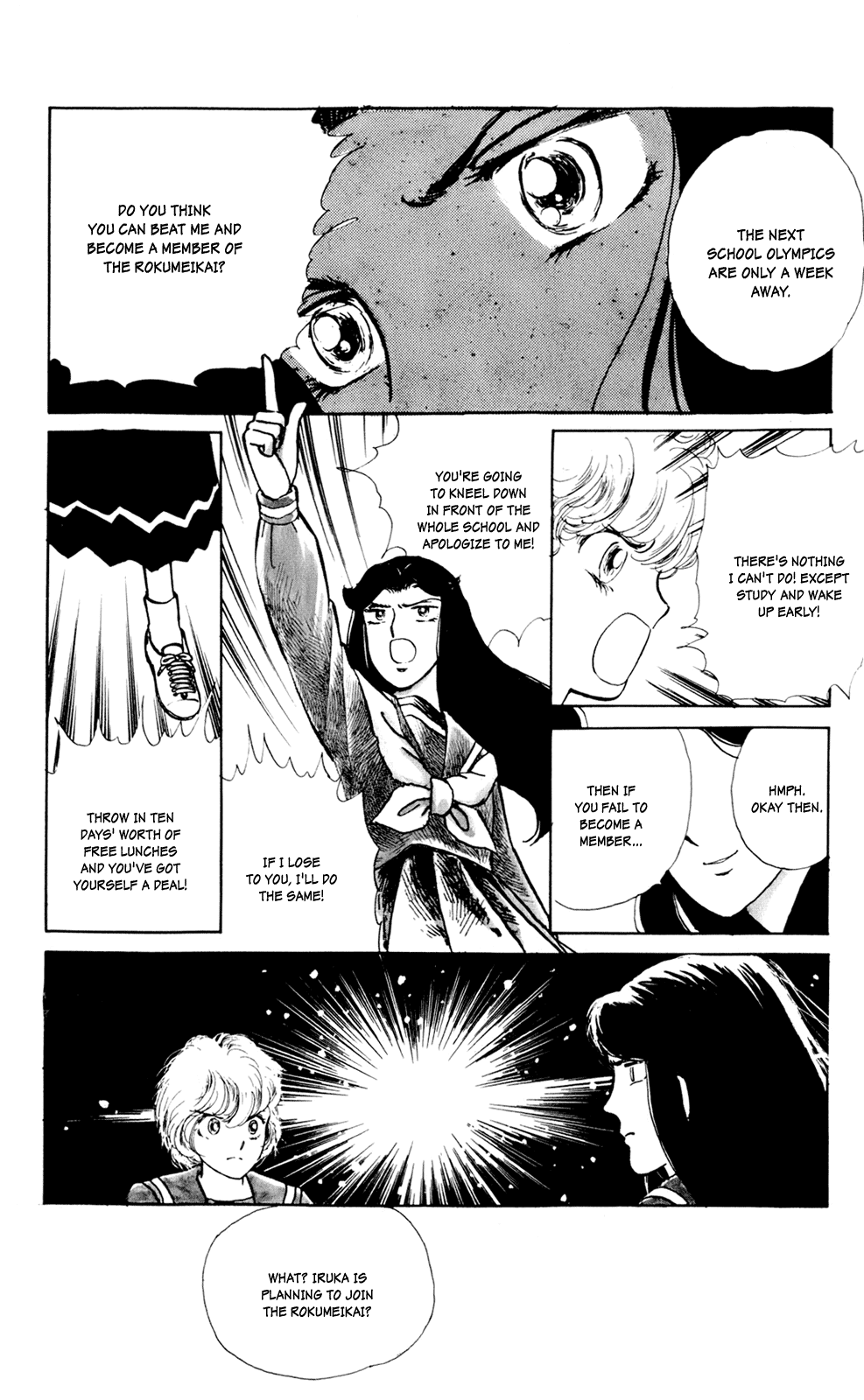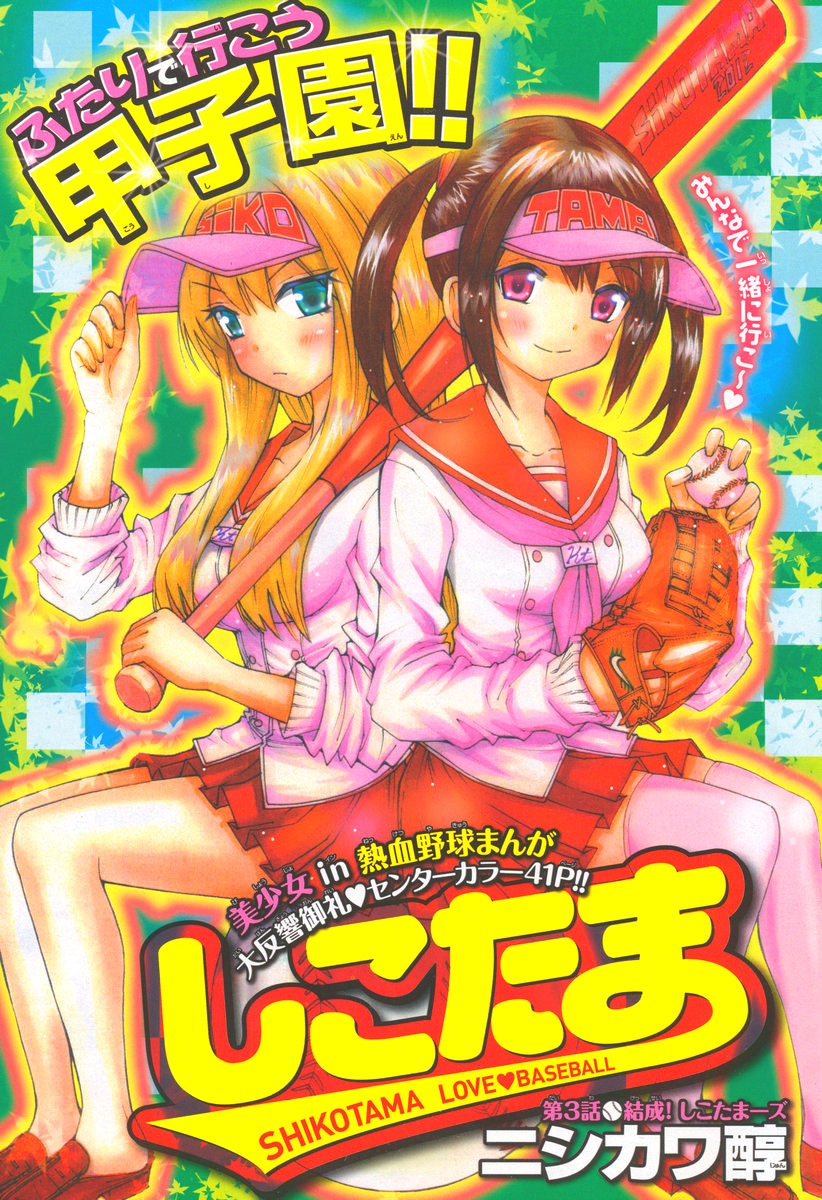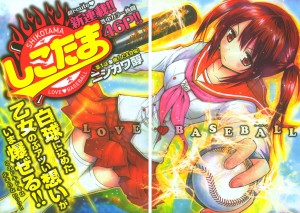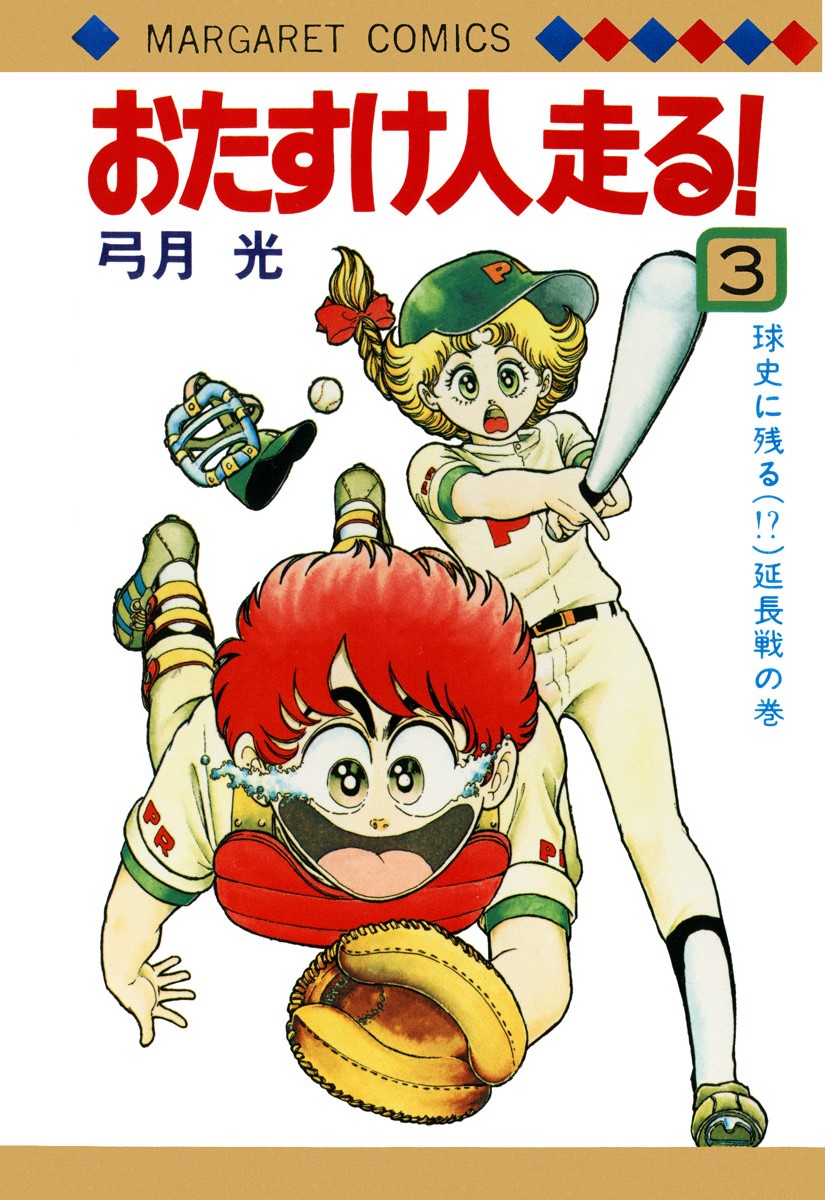4-Ban Sado is a one-volume baseball manga by Aoyama Gosho, a fairly well-known shounen mangaka. And by “fairly well-known” I mean he’s the author of the absurdly long-running never-getting-anywhere Detective Conan/Case Closed. Since he’s so busy with Conan it’s not strange that he doesn’t have much time to devote to any other series. It’s understandable, but 4-Ban Sado could have been a very interesting manga in the hands of someone with more time and attention to devote to developing the concept within.
Story summary from mangaupdates: About a boy who plays baseball for his school and has a magical bat, but every time he hits a pitch he has to pay money to keep it.
The boy’s name is Shigeo Nagashima and he is named after a famous Japanese batter. Because of that his team makes him the clean up and third baseman like his namesake, even though he can’t hit worth a lick. One day he stumbles across a mysterious sporting goods store and gets a magic bat that allegedly belonged to Babe Ruth and which is capable of hitting any pitch. The catch is he has to pay for it by putting money into his back pocket. Matters are further complicated when the mysterious store owner gives a magic pitcher’s glove to a superstar pitcher and sets the two on a collision course. It’s the unbreakable shield vs. invincible spear dilemma again… or maybe not.
 As I said, plenty could have been done with the idea if the manga had been longer. And if the protagonist Nagashima had been smarter about things. A bad batter with a good bat is still a bad batter, so all he ever knows how to do is stick a random amount of money in his pocket and hope for the best. Not smart.
As I said, plenty could have been done with the idea if the manga had been longer. And if the protagonist Nagashima had been smarter about things. A bad batter with a good bat is still a bad batter, so all he ever knows how to do is stick a random amount of money in his pocket and hope for the best. Not smart.
For example, he really should have tried harder to figure out the full capabilities of the bat. What kind of hit do you get for 100 yen? 200? 1000? He makes a weak attempt in the beginning, then throws everything out of the window quickly and uses whatever amount of money he has on hand. This comes to bite him in the butt at least once when he puts everything he has into a hit… and it turns out to be a foul. It’s also really stupid that all he ever aims for are big homeruns when he could win more cheaply and more efficiently with well-placed singles/doubles/triples.
Also, strangely enough, nobody ever suspects anything when this weakling suddenly starts belting them out of the park on a regular basis. Again, maybe in a longer manga reporters and rival teams would have come sniffing around, especially when it got to the Koshien stage. There’s also the issue of Shigeo’s love interest Enatsu (named after legendary pitcher Yutaka Enatsu) who seems like she will have a key role to play in the story but is instead relegated to sitting in the stands doing absolutely nothing for the bulk of the story.
And so on and so forth. There are lots of wasted ideas and plenty of unexplored potential in 4-Ban Sado. The whole thing was so rushed and unsatisfying, it’s a real waste of potential. It’s only 1 volume long and it’s by a famous mangaka, so it should be easy enough to find on Amazon if you’re interested. Don’t say I didn’t warn you when you’re disappointed, though.






